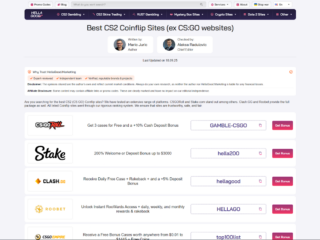

The visual identity of a brand is its primary ambassador without any words. A well-designed visual branding identity transmits the intended idea to potential clients. It establishes a bond with them and forms an emotional attachment.
The visual identity definition includes visual elements that collectively create a brand’s memorable face. It aims to visually represent your enterprise. This factor is paramount for a sustainable reputation because visuals differentiate your brand from rivals. They also help you achieve trust and loyalty of your clients.
This article explains the significance of visual identity. Using our tips, you can establish and maintain a powerful image, appealing to your clientele.
The Essentials
Logotype
A logo is a symbol or emblem that showcases the core value and essence of your enterprise. A well-designed logo is simple yet recognizable, conveying the intended message at a glance. Study the color theory and apply the color scheme that conveys the intended ideas and evokes emotions. Photos, drawings, and images should support the central theme and enrich the storytelling.
You may not like fast food, but the yellow letter M on the red background is familiar. McDonald’s is a great example of the significance of logos in a successful marketing strategy.
Starbucks has a globally recognized logo. The Siren symbolizes coffee’s allure and the seafaring history of coffee traders.
Texts and Fonts
The size, appearance, and style of the printed texts are pivotal for your enterprise’s presentation. They must keep a unified look. Typefaces convey various aspects of your brand’s personality. Serif fonts, like Times New Roman, represent conventionalism. Fonts without serifs (such as Arial or Helvetica) typically convey a modern, neat, and simple vibe. Fonts with a script style (such as Pacifico) can bring in hints of sophistication, originality, or warmth. Fonts for display purposes (such as Impact) are bold and designed to grab attention.

Coca-Cola presents one of the most known visual identity examples. Its iconic red-and-white color scheme and eye-catching typography set it apart from other beverage brands.
FedEx uses typography strategically to highlight key messages and create a clear hierarchy of information. Headlines often use bold, uppercase letters to draw attention, while body text remains clean and legible.
Cohesiveness
Every visual element you use is a part of one narrative. Ensure that every part of communication, from business cards to websites, is aligned.
Apple’s consistency is one of the cornerstones of this brand’s reputation. From its products’ sleek design to its advertising’s minimalist aesthetics, every visual element embraces innovation and simplicity as the company’s main ideas.
Nike’s iconic swoosh logo and consistent use of bold, motivational imagery makes it recognizable in the sportswear industry. A clean, minimalist color scheme combined with impactful typography effectively conveys the idea of strength and success.
Shape the Visibility
Get Ready
Start by defining your client base, current and future. Then, research to be aware of their desires and needs. The creative work should rely on this data. Ensure your visual identity appeals to your customers. Before starting the design process, specify your brand’s core values and key message. What does your brand stand for? This data is pivotal for shaping the visual identity that conveys your business’s main message.
Design
Begin with designing a logotype that embodies your brand’s values and message. It should be laconic, versatile, and catchy. Ensure it works well in many different sizes and formats. Select a palette to evoke the necessary emotions. Colors should match your brand’s message — blue and green convey calmness and professionalism; red and orange represent urgency and excitement. Choose legible fonts, matching your brand’s tone.

Use high-quality images and graphics that highlight the intended narrative. All visual content should be aligned with the intended style and tone. Photo editing programs like Luminar Neo are essential for this step. These photo editors enhance the imagery’s appeal and let you maintain a consistent look across the imagery. Ensure your visual elements are applied uniformly. The batch processing function in your photo editing program will be particularly useful here.
Think about composing the brand guidelines that incorporate every part of your brand’s visual identity. These guidelines need to explain how the logo, colors, and images are applied. Regularly review and refresh the visual elements. Remain relevant and connected with consumers. Consider that their preferences may vary. Nonetheless, make sure that any revisions stay faithful to the idea you would like to transmit. Clear guidelines ensure that the brand’s message is effectively transmitted.
Conclusion
The visual branding identity is very important in defining how your brand is viewed. The investment in a well-crafted visual identity pays off in the form of a memorable brand presence and long-term customer loyalty. Applying the advice from this article, you can distinguish your brand from rivals and build trust with the clients. A well-composed visual identity is a significant part of any marketing strategy. It is pivotal for any brand looking to make a significant impact. It requires meticulous planning, creative mindset, and consistency. If you pay regard to the given elements, your brand can stand out in the overloaded market.










